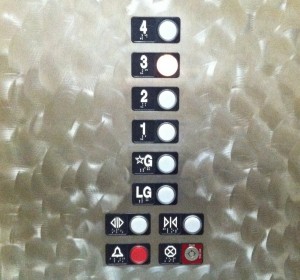I was reading a recent post on AdExchanger, “Smoking the RTB Weed,” about a Real-time bidding paper Metamarkets was gearing up to present at an industry event and it got me thinking about dynamic price floors (n.b. If you’re not already familiar with RTB, you might want to start with my earlier post on the topic to get up to speed. This post is pretty ‘inside baseball.’)
Disparity of Data
There’s a lot concern in the online ad ecosystem around the disparity of data between publishers and advertisers. These are not new concerns but they are attracting a lot of attention due to the opportunity that Real-Time Bidding (RTB) presents in leveling the playing field.
Historically advertisers have been incentivized to understand the audience behind the publisher in order to maximize their yield. This has led to a large investment in technology to serve the advertiser, tilting the balance of information to their favor and leading to rampant arbitrage. As a result, most impressions are still sold without adequate protection.
Re-balancing Toward the Publisher
Real-Time Bidding affords the publisher an opportunity to re-balance the terms of the sale of inventory. In fact, in many ways the savvy, well-armed publisher can leverage RTB to gain an advantage in that each impression is evaluated and assigned a value by several buyers.
During an auction only one buyer can purchase the impression, but the data gathered from the other buyers is not discarded, rather it is captured by the publisher (or in our customers’ case, by REVV) and stored for analysis and pricing determination on all future bids.
Simulation

During the simulation the system records the revenue gained for each impression whether it goes to the highest bidder at the second price, at the floor price or even if the floor prices out all bids and the impression goes to a non-RTB demand source.
After the simulation another algorithm runs through the revenue at each floor and determines at which floor price the revenue is maximized. These simulations are run at different levels of audience granularity and the resulting, boiled data is stored.
Dynamic Price Floors
REVV pricing intelligence algorithms draw on this data whenever a publisher has configured a segment of their inventory to use a dynamic floor. The publisher has the option to choose a price range for that inventory and REVV responds by providing the optimal floor within that range. If the publisher doesn’t choose to set their own price range, REVV will make a price range recommendation based on the bid price and volume distribution. Either way, new floors are constantly set and re-set for the inventory in response to changes in demand.
Dynamic Price Floors is just one of the ways that the REVV platform empowers the publisher to claim higher yield from their inventory, and reclaim balance in the marketplace. We’re excited to announce that we’ve released enhanced Dynamic Pricing Floor technology today, and we’ll use this space to keep our customers and partners up to date on the results we see in the weeks and months ahead.




